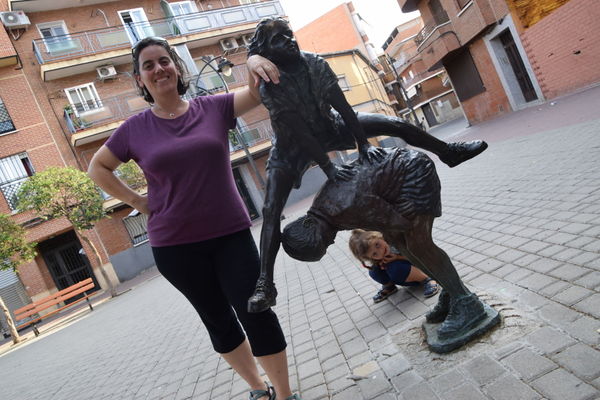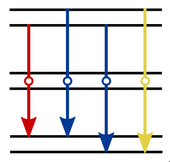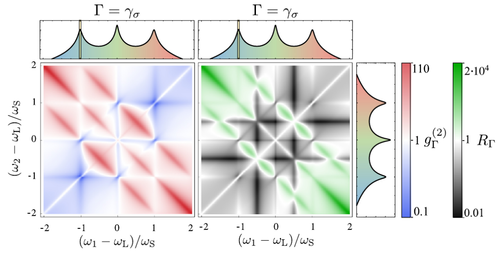m (Created page with "= Leapfrog = <center><wz tip="Elena and Julia with a leapfrog statue, in Getafe, 24 August 2018.">600px</wz></center>") |
m (→Leapfrog) |
||
| Line 1: | Line 1: | ||
= Leapfrog = | = Leapfrog = | ||
| + | |||
| + | '''Leapfrog''' ({{fr}} saute-mouton) is a children's game that involves two great activities for children: you jump over someone and you are being jumped over. This iterative character of an action where one is alternatively active and passive makes this simple game an inspirational metaphor for several other processes that intertwine something (such as the leapfrog algorithm). | ||
<center><wz tip="Elena and Julia with a leapfrog statue, in Getafe, 24 August 2018.">[[File:Getafe-24Aug18-22.jpg|600px]]</wz></center> | <center><wz tip="Elena and Julia with a leapfrog statue, in Getafe, 24 August 2018.">[[File:Getafe-24Aug18-22.jpg|600px]]</wz></center> | ||
| + | |||
| + | In our case, we used the terminology to describe the "''leapfrog''" process in the relaxation dynamics of a quantum system. When a photon jumps from one energy level to another which is not the one immediately contiguous, it can do so by involving a virtual photon. You can picture this jumping over the intermediate energy level as a photon-aided leapfrogging, jumping with the aid of something dynamical and of its own kind, rather than relying on something static and fixed (a fence for children or a quantum state for a photon). | ||
| + | |||
| + | <center><wz tip="Four leapfrog transitions in the so-called Mollow ladder (of resonance fluorescence) that consists of pairs of doublets for the energy levels, the ''rungs'' of the ladder. There are four possible transitions, two of which (in blue) are degenerate. The circle represents the virtual photon.">[[File:leapfrog-process.png|170px]]</wz></center> | ||
| + | |||
| + | The photon is virtual because it can have an energy which does not belong to the energy level structure of the system. This produces strongly quantum correlated two-photon states as when these <wz tip="The one jumping and the one being jumped over.">two photons are emitted, they become <wz tip="You can use them, starting with detecting them.">real</wz> but retain the strong connection from the way they have been generated: in a joint-leapfrogging scenario. They do not have to be degenerate and as the virtual photon can relax the conservation of energy condition $E_1-E_2=h\nu$, this produces a continuum of frequencies $\nu$ rather than the typical discrete (quantized) emission given by the difference of energy levels $E_i$. You do not see leapfrog emission directly in normal spectroscopy since this is a weak process (unless under particular conditions, such as from the emission of planetary nebulae) but you can see it clearly in quantum spectroscopy. This appears as | ||
| + | |||
| + | <center><wz tip="Two-photon correlation spectra computed by Sanchez Muñoz ''et al.'' (PRA 2014) showing two-photon correlation $g^{(2)}_\Gamma$ (blue-red) and violation of Cauchy-Schwarz equalities $R_\Gamma$. The leapfrog emission is neatly resolved as three antidiagonal lines. Red corresponds to photon bunching (coming together, as expected for leapfrogging) and green correspond to non-classical character of the light. This shows that leapfrog photons are the chief carrier of non-classical emission.">[[File:leapfrog-2PS.png|500px]]</wz></center> | ||
| + | |||
| + | Also, the concept extend to arbitrary $N$-photon, jumping from one energy level to another involving $N-1$ virtual photons. | ||
Revision as of 11:34, 23 February 2019
Leapfrog
Leapfrog (![]() saute-mouton) is a children's game that involves two great activities for children: you jump over someone and you are being jumped over. This iterative character of an action where one is alternatively active and passive makes this simple game an inspirational metaphor for several other processes that intertwine something (such as the leapfrog algorithm).
saute-mouton) is a children's game that involves two great activities for children: you jump over someone and you are being jumped over. This iterative character of an action where one is alternatively active and passive makes this simple game an inspirational metaphor for several other processes that intertwine something (such as the leapfrog algorithm).

In our case, we used the terminology to describe the "leapfrog" process in the relaxation dynamics of a quantum system. When a photon jumps from one energy level to another which is not the one immediately contiguous, it can do so by involving a virtual photon. You can picture this jumping over the intermediate energy level as a photon-aided leapfrogging, jumping with the aid of something dynamical and of its own kind, rather than relying on something static and fixed (a fence for children or a quantum state for a photon).

The photon is virtual because it can have an energy which does not belong to the energy level structure of the system. This produces strongly quantum correlated two-photon states as when these two photons are emitted, they become real but retain the strong connection from the way they have been generated: in a joint-leapfrogging scenario. They do not have to be degenerate and as the virtual photon can relax the conservation of energy condition $E_1-E_2=h\nu$, this produces a continuum of frequencies $\nu$ rather than the typical discrete (quantized) emission given by the difference of energy levels $E_i$. You do not see leapfrog emission directly in normal spectroscopy since this is a weak process (unless under particular conditions, such as from the emission of planetary nebulae) but you can see it clearly in quantum spectroscopy. This appears as

Also, the concept extend to arbitrary $N$-photon, jumping from one energy level to another involving $N-1$ virtual photons.